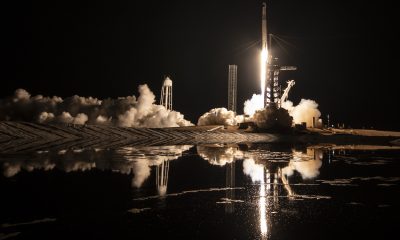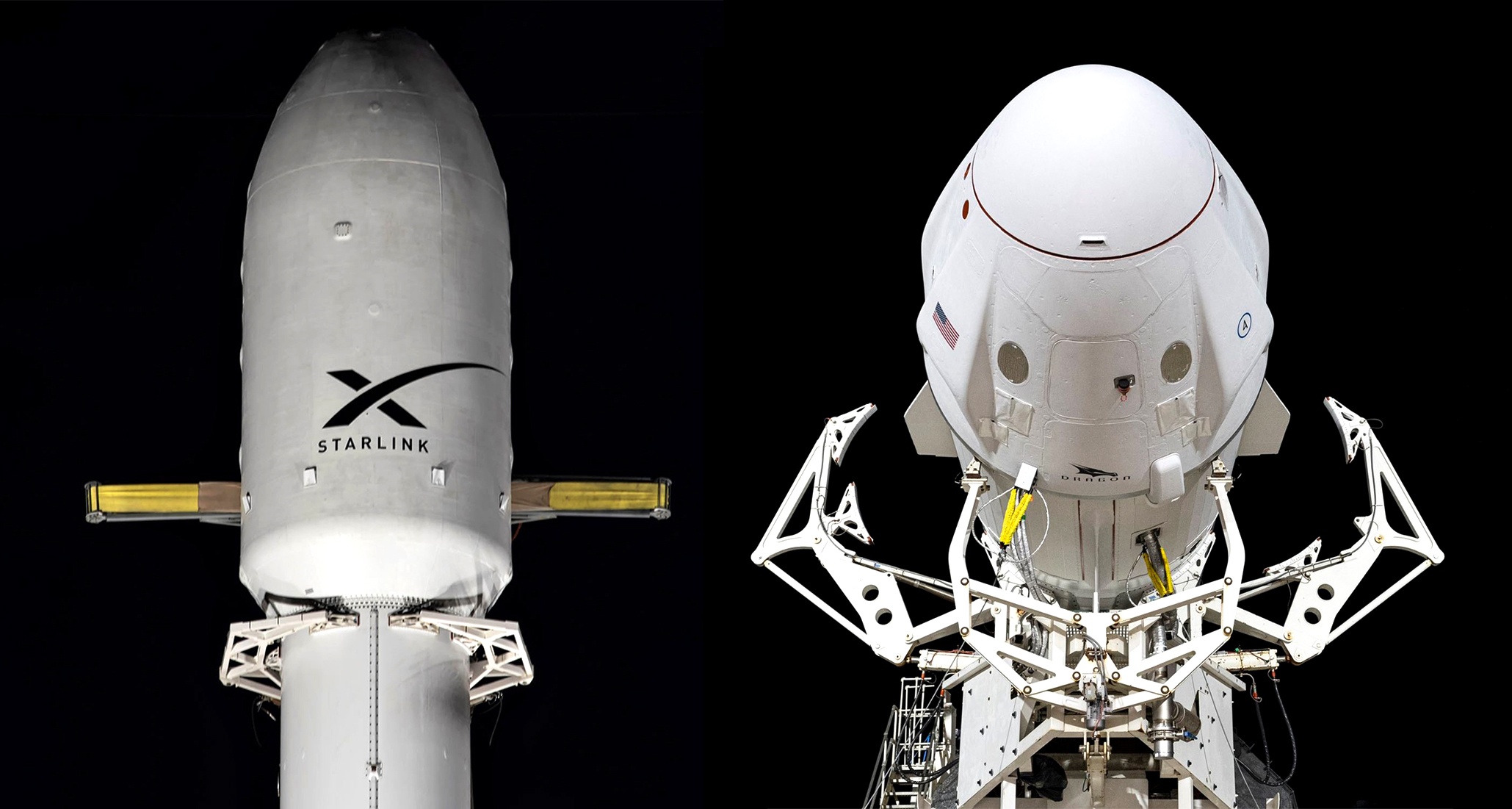

News
SpaceX sends two drone ships to sea for back-to-back Starlink, astronaut launches
Update: SpaceX has rolled out Crew-4’s Falcon 9 and Crew Dragon in anticipation of prelaunch testing. However, due to poor weather in landing regions, NASA and SpaceX have also delayed the private Axiom-1 crew’s return to Earth a second time.
Without the undocking time confirmed, it’s likely that Crew-4 will be pushed back to April 24th or 25th at the earliest. Starlink 4-14, nonetheless, appears to remain on track for an April 21st launch attempt.
SpaceX has sent both of its East Coast drone ships to sea to support an upcoming pair of back-to-back Falcon 9 launches and landings.
The ‘autonomous spaceport drone ship ‘ (ASDS) Just Read The Instructions (JRTI) left first, exiting Florida’s Port Canaveral with the help of a tugboat on April 16th. On April 18th, drone ship A Shortfall of Gravitas (ASOG) followed suit, shadowing JRTI en route to a similar location northeast of Cape Canaveral. Both should arrive at their respective Atlantic Ocean landing zones within a few days.
No earlier than (NET) 11:16 am EDT (15:16 UTC), Thursday, April 21st, SpaceX is scheduled to launch a well-worn Falcon 9 booster carrying a new upper stage and the latest batch of ~50 Starlink V1.5 satellites. Less than two full days later, a different Falcon 9 rocket is scheduled to launch a new Crew Dragon spacecraft and four NASA and ESA astronauts on their way to the International Space Station.
Starlink 4-14 – the 14th mission carrying satellites destined for the fourth of five Starlink orbital ‘shells’ – will be SpaceX’s 9th Starlink launch and 15th launch overall in 2022, averaging just shy of one launch per week. The mission should also leave SpaceX with more than 2100 working Starlink satellites in orbit – likely not far off from half of all operational satellites in Earth orbit.
SpaceX appears to have assigned Falcon 9 booster B1061 to the launch after the rocket – already integrated with a new upper stage – was spotted on the way to Cape Canaveral Space Force Station (CCSFS) Launch Complex 40 (LC-40) on April 18th. Starlink 4-14 will be B1060’s 12th launch since June 30th, 2020, tying Falcon 9 B1051’s booster reuse record but accomplishing the feat almost 15 months faster. It’s unlikely that B1051 will ever retake its crown from B1060. Based on past performance, B1060 could easily fly another 4-6 times before the end of 2022 if it survives Starlink 4-14.
As few as 42 hours later, Falcon 9 booster B1067 could lift off for the fourth time with a new Crew Dragon capsule – C212 or “Freedom” – and a team of four professional astronauts as part of NASA’s Crew-4 mission at 5:26 am EDT (09:26 UTC), April 23rd. Crew-4 will be SpaceX’s seventh astronaut launch since May 2020 and its fourth operational crew transport mission for NASA. A few days after Crew Dragon C212 docks with the International Space Station (ISS), four Crew-3 astronauts will board a different Crew Dragon and return to Earth, handing off the US segment to Crew-4.
However, two Crew Dragons are already docked to the ISS, taking up both available International Docking Adapter (IDA) ports. Before Crew-4 can launch, Axiom-1 – SpaceX’s first all-private astronaut mission to the space station – must undock and return to Earth. On April 18th, that undocking was delayed about 15 hours by poor weather to 10 pm EDT, April 19th, pushing splashdown and recovery off the coast of Florida to mid-afternoon, April 20th. NASA and SpaceX will then have about 60 hours to analyze any data gathered from the completed Axiom-1 mission and determine whether or not to proceed with Crew-4 on April 23rd.
News
Tesla begins Robotaxi certification push in Arizona: report
Tesla seems serious about expanding its Robotaxi service to several states in the coming months.

Tesla has initiated discussions with Arizona transportation regulators to certify its driverless Robotaxi service in the state, as per a recent report from Bloomberg News. The move follows Tesla’s launch of its Robotaxi pilot program in Austin, Texas, as well as CEO Elon Musk’s recent comments about the service’s expansion in the Bay Area.
The Arizona Department of Transportation confirmed to Bloomberg that Tesla has reached out to begin the certification process for autonomous ride-sharing operations in the state. While details remain limited, the outreach suggests that Tesla is serious about expanding its driverless Robotaxi service to several territories in the coming months.
The Arizona development comes as Tesla prepares to expand its service area in Austin this weekend, as per CEO Elon Musk in a post on X. Musk also stated that Tesla is targeting the San Francisco Bay Area as its next major market, with a potential launch “in a month or two,” pending regulatory approvals.
Tesla first launched its autonomous ride-hailing program on June 22 in Austin with a small fleet of Model Y vehicles, accompanied by a Tesla employee in the passenger seat to monitor safety. While still classified as a test, Musk has said the program will expand to about 1,000 vehicles in the coming months. Tesla will later upgrade its Robotaxi fleet with the Cyercab, a two-seater that is designed without a steering wheel.
Sightings of Cybercab castings around the Giga Texas complex suggests that Tesla may be ramping the initial trial production of the self-driving two-seater. Tesla, for its part, has noted in the past that volume production of the Cybercab is expected to start sometime next year.
In California, Tesla has already applied for a transportation charter-party carrier permit from the state’s Public Utilities Commission. The company is reportedly taking a phased approach to operating in California, with the Robotaxi service starting with pre-arranged rides for employees in vehicles with safety drivers.
News
Tesla sets November 6 date for 2025 Annual Shareholder Meeting
The automaker announced the date on Thursday in a Form 8-K.
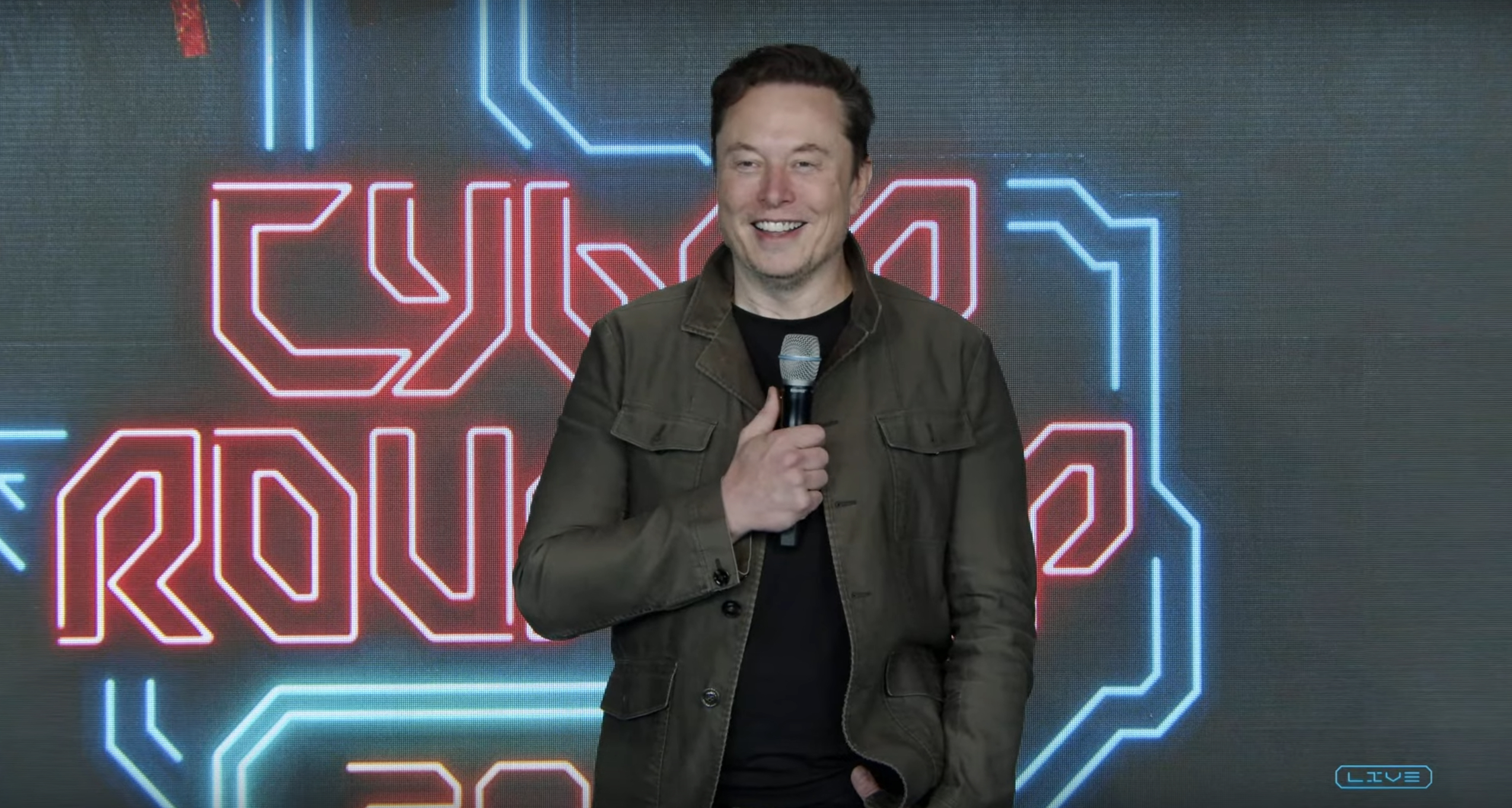
Tesla has scheduled its 2025 annual shareholder meeting for November 6, addressing investor concerns that the company was nearing a legal deadline to hold the event.
The automaker announced the date on Thursday in a Form 8-K submitted to the United States Securities and Exchange Commission (SEC). The company also listed a new proposal submission deadline of July 31 for items to be included in the proxy statement.
Tesla’s announcement followed calls from a group of 27 shareholders, including the leaders of large public pension funds, which urged Tesla’s board to formally set the meeting date, as noted in a report from The Wall Street Journal.
The group noted that under Texas law, where Tesla is now incorporated, companies must hold annual meetings within 13 months of the last one if requested by shareholders. Tesla’s previous annual shareholder meeting was held on June 13, 2024, which placed the July 13 deadline in focus.
Tesla originally stated in its 2024 annual report that it would file its proxy statement by the end of April. However, an amended filing on April 30 indicated that the Board of Directors had not yet finalized a meeting date, at least at the time.
The April filing also confirmed that Tesla’s board had formed a special committee to evaluate certain matters related to CEO Elon Musk’s compensation plan. Musk’s CEO performance award remains at the center of a lengthy legal dispute in Delaware, Tesla’s former state of incorporation.
Due to the aftermath of Musk’s legal dispute about his compensation plan in Delaware, he has not been paid for his work at Tesla for several years. Musk, for his part, has noted that he is more concerned about his voting stake in Tesla than his actual salary.
At last year’s annual meeting, TSLA shareholders voted to reapprove Elon Musk’s compensation plan and ratified Tesla’s decision to relocate its legal domicile from Delaware to Texas.
Elon Musk
Grok coming to Tesla vehicles next week “at the latest:” Elon Musk
Grok’s rollout to Tesla vehicles is expected to begin next week at the latest.
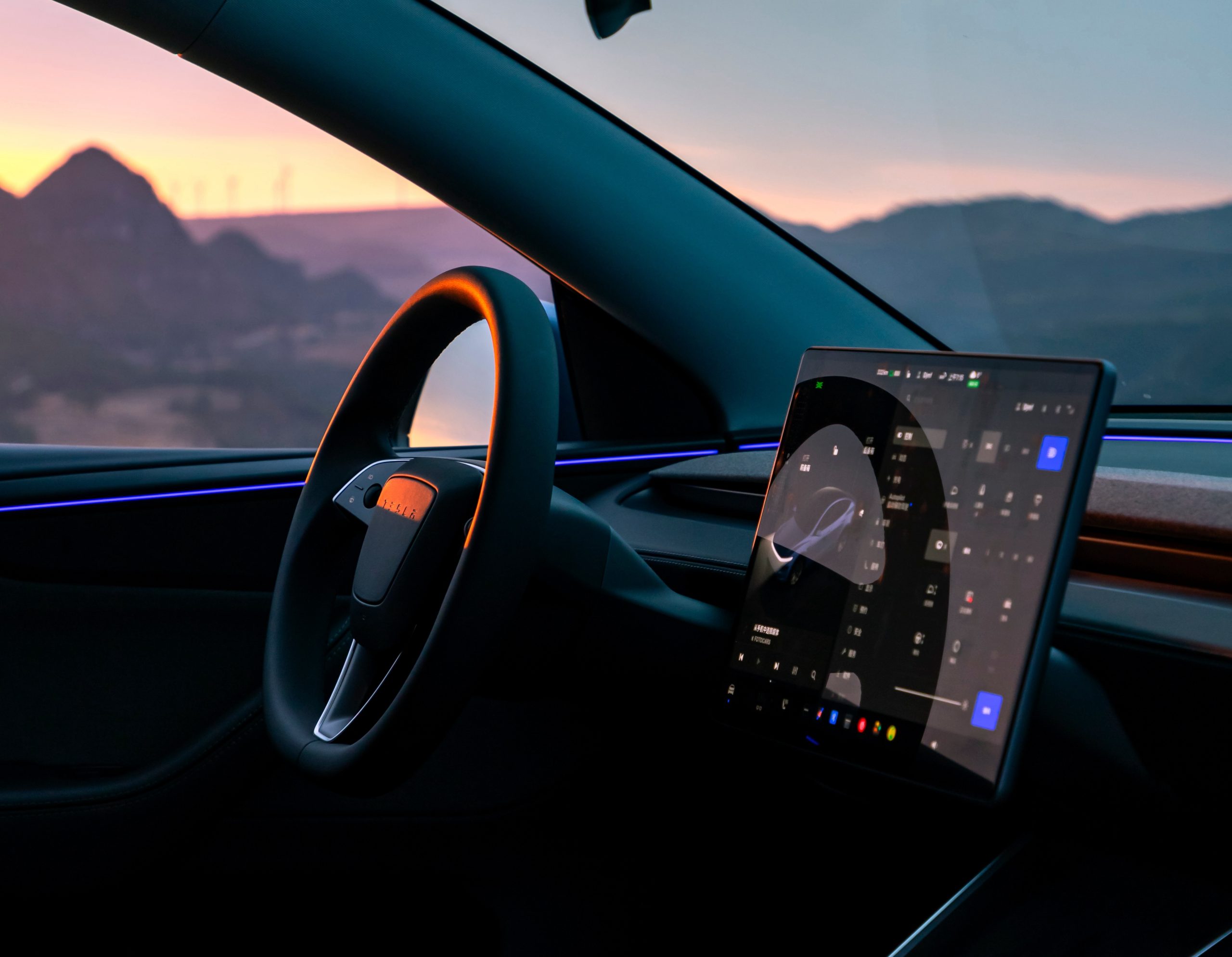
Elon Musk announced on Thursday that Grok, the large language model developed by his startup xAI, will soon be available in Tesla vehicles. Grok’s rollout to Tesla vehicles is expected to begin next week at the latest, further deepening the ties between the two Elon Musk-led companies.
Tesla–xAI synergy
Musk confirmed the news on X shortly after livestreaming the release of Grok 4, xAI’s latest large language model. “Grok is coming to Tesla vehicles very soon. Next week at the latest,” Musk wrote in a post on social media platform X.
During the livestream, Musk and several members of the xAI team highlighted several upgrades to Grok 4’s voice capabilities and performance metrics, positioning the LLM as competitive with top-tier models from OpenAI and Google.
The in-vehicle integration of Grok marks a new chapter in Tesla’s AI development. While Tesla has long relied on in-house systems for autonomous driving and energy optimization, Grok’s integration would introduce conversational AI directly into its vehicles’ user experience. This integration could potentially improve customer interaction inside Tesla vehicles.
xAI and Tesla’s collaborative footprint
Grok’s upcoming rollout to Tesla vehicles adds to a growing business relationship between Tesla and xAI. Earlier this year, Tesla disclosed that it generated $198.3 million in revenue from commercial, consulting, and support agreements with xAI, as noted in a report from Bloomberg News. A large portion of that amount, however, came from the sale of Megapack energy storage systems to the artificial intelligence startup.
In July 2023, Musk polled X users about whether Tesla should invest $5 billion in xAI. While no formal investment has been made so far, 68% of poll participants voted yes, and Musk has since stated that the idea would be discussed with Tesla’s board.
-

 Elon Musk1 week ago
Elon Musk1 week agoTesla investors will be shocked by Jim Cramer’s latest assessment
-

 Elon Musk3 days ago
Elon Musk3 days agoElon Musk confirms Grok 4 launch on July 9 with livestream event
-

 Elon Musk17 hours ago
Elon Musk17 hours agoxAI launches Grok 4 with new $300/month SuperGrok Heavy subscription
-

 News7 days ago
News7 days agoTesla Model 3 ranks as the safest new car in Europe for 2025, per Euro NCAP tests
-
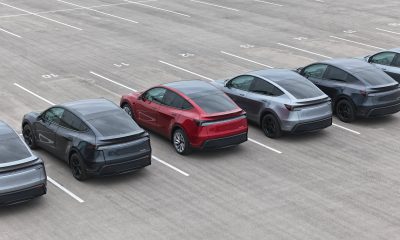
 Elon Musk2 weeks ago
Elon Musk2 weeks agoA Tesla just delivered itself to a customer autonomously, Elon Musk confirms
-

 Elon Musk1 week ago
Elon Musk1 week agoxAI’s Memphis data center receives air permit despite community criticism
-
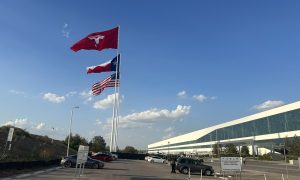
 Elon Musk2 weeks ago
Elon Musk2 weeks agoTesla’s Omead Afshar, known as Elon Musk’s right-hand man, leaves company: reports
-

 News2 weeks ago
News2 weeks agoXiaomi CEO congratulates Tesla on first FSD delivery: “We have to continue learning!”


